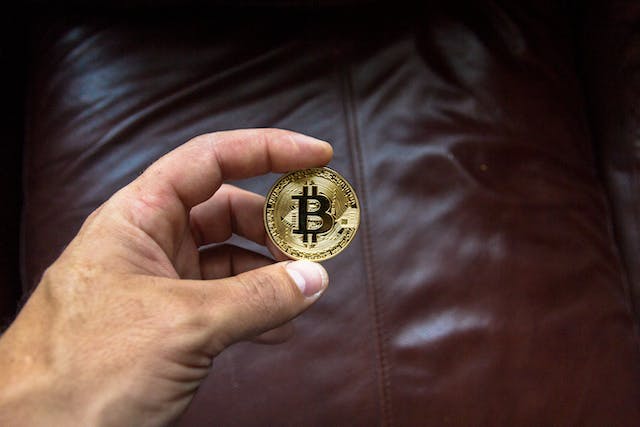
Interoperability represents the new frontier for decentralized networks. Seamless connections between blockchains via bridges promise to stitch together the disjointed worlds of crypto assets into an integrated financial mesh. Supporting interchain operability aligns with the values of accessibility and openness held deeply here at Defi Way. Read on for our perspective on the bridges building the highways of the multi-chain future.
The Fragmented Status Quo
Despite cryptocurrency’s ethos of openness, thousands of disjointed blockchain projects have emerged since Bitcoin, each with discrete ecosystems. Transitioning assets across chains requires slow, expensive centralized exchanges charging hefty fees. Traders deal with liquidity fragmentation, institutions navigate risks spanning custody and integration across siloed networks.
This fractures communities and liquidity while severely limiting usefulness of novel blockchain features and token functionality. Networks operating in closed loops fail to reach their transaction volume and market cap potential. Exciting applications spanning scalability, compliance, governance, and more stay siloed because assets cannot connect freely to leverage strengths across chains.
Interoperability solutions like Polkadot and Cosmos offer visions to resolve this by bridging independent yet interconnected chains. Meanwhile, atomic swaps and trustless token wrap protocols like RenVM provide decentralized pathways for assets to traverse between networks like Solana and Ethereum. These bridges Aggregate scattered users and tokens, unlocking network effects to accelerate adoption.
As pioneers in decentralized finance, Defi Way sees immense potential in bridging technologies to enable the open, integrated blockchain infrastructure necessary to truly revolutionize finance.
Expanding Functionality and Opportunity
Well executed blockchain interoperability unlocks profound utility, including:
- Access to specialized dApps and features across chains compatible with bridged assets
- Flexibility to relocate assets across chains efficiently as innovations emerge
- Mitigating platform risk by diversifying holdings across multiple networks
- Frictionless trading, lending and transactions leveraging combined liquidity
- On/off ramps for mainstream capital to access crypto innovations seamlessly
Those interacting with bridges like RenBridge or Celer cBridge will soon traverse cosmos ecosystems to access leading DEXs, lenders, prediction markets and more in a streamlined interface. Attractive staking rewards promoted by communities like Kava will attract conventional assets via stablecoin bridges, boosting Total Value Locked and development. Interlinked blockchains will forge the foundation of a more robust and useful financial system for all.
Of course, usability gaps still disrupt mainstream comfort with interoperability. But improvements to interfaces are arriving, hiding intricate bridging operations behind seamless user experiences. For less technical users, transfer complexity melts away into simple wallet addresses reflecting combined chain holdings and moves. Defi Way looks forward to a day when moving assets across cosmic ecosystems becomes as easy selecting apps on a smartphone.
Overcoming Known Barriers
Technical obstacles accompany connecting the diverse and complex blockchain environments flourishing today. Differences in code languages, security requirements, speed, transaction philosophy, governance logic and more pose challenges. Issues like transaction finality confirmation lags can cause reconciliation failures between chains and asset loss.
Therefore, crypto bridges must navigate treacherous tradeoffs between security assurances, decentralization, flexibility for native environments and ease of use. But behind the scenes, steady progress marches forward on many fronts. Secure token mint and burn mechanisms are tested and improved. Standards around security proofs and communication protocols gain adoption. And economically sustainable models utilize validator reward pools to decentralize operations.
Of course skepticism persists around vulnerabilities posed by bridges relating to throughput bottlenecks, centralization risks and single-points of failure. But an array of solutions from trust-minimized relay schemes to decentralized custody and bridge chains mitigates these structural weaknesses. Meanwhile user awareness of risks improves to empower personal decisions aligned with risk tolerance.
Additionally, the cultural reluctance towards cooperation across crypto communities shows signs of thawing among builders and leaders. The spirit of openness stands poised to transcend petty tribalism as the industry shifts focus from speculation to integration with traditional finance. Defi Way looks forward to the bridges sure to follow.
What Lies Ahead
The next era promises exponentially greater exchange between the growing array of sovereign blockchains and their distinctive assets and apps. Already, billions in value flows daily across bridges like Wormhole and Chainbridge, but this only scratches the surface of a future handling trillions in transactions.
As bridges facilitate asset movements to optimal networks for jobs, they will tear down barriers between communities. Seamless journeys between Cosmos ecosystems, Polkadot parachains and external chains will enhance liquidity while mitigating tradeoffs. The multi-chain future awaits, one bridge at a time.
Of course, realizing the full vision requires bridges that retain the permissionless and censorship resistant nature that makes crypto so revolutionary. Projects maximizing decentralization and user control represent the ideal. And progress towards these hardy and secure intersections appears steady thanks to standardization efforts and deep financial incentives.
Ultimately then, the question is not whether to bridge toward open networks, but rather how to build bridges that empower users to dictate the flow of their own digital value. Here at Defi Way, we eagerly track cutting edge advancements while clarifying concepts for newcomers. After all, simplifying complexity helps bring to life the great promise of the multi-chain future.